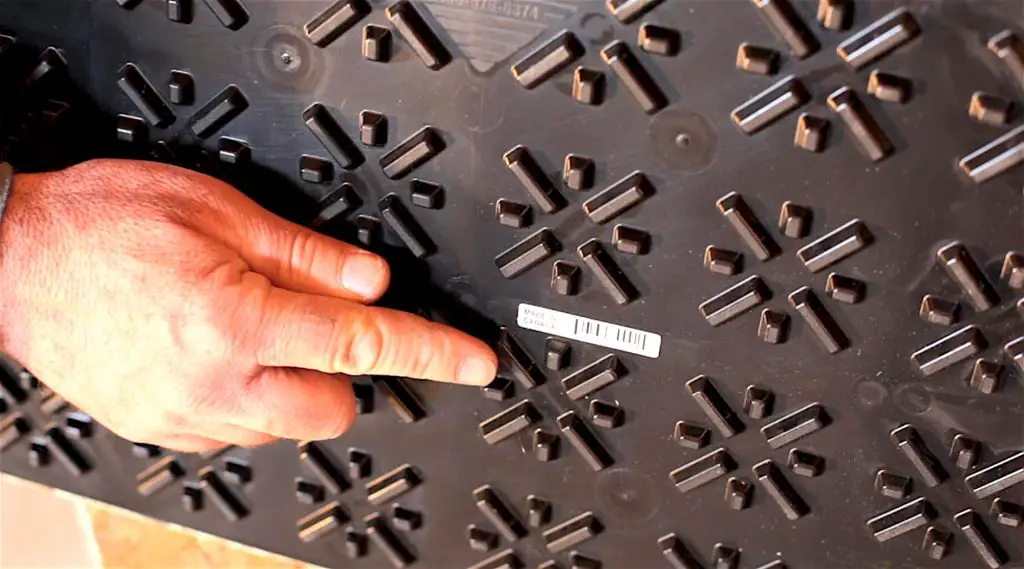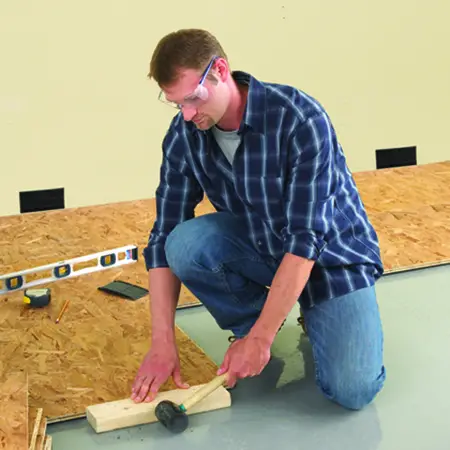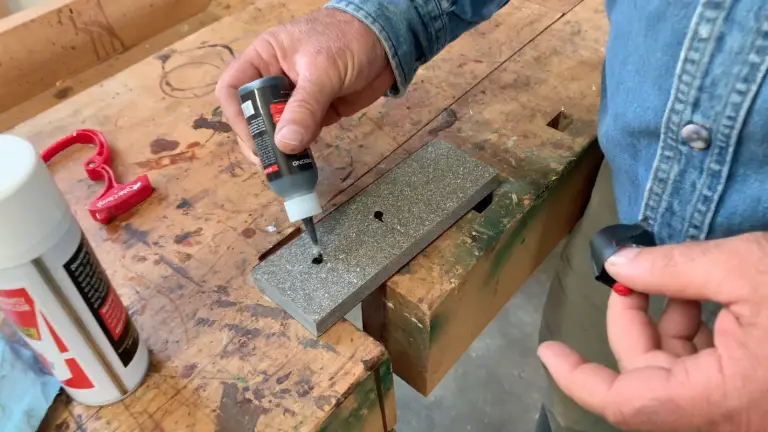If you’re planning to finish your basement, you really need to eavesdrop on my advice to a reader named Dunc. He emailed me about his plan to replace basement carpet with laminate installed over manufactured subfloor tiles. That’s a great plan, but Dunc faced a problem that’s also quite common.
“I’ve already installed subfloor tiles in one small area”, Dunc explained to me, “but had to do a lot of shimming to keep the tiles level since the concrete floor has a built-in slope towards the floor drain. The rest of the job is larger, so the amount of slope I need to deal with is unmanageable with shims. What should I do?”
The subfloor tiles Dunc is using are common and effective. They measure 2 feet x 2 feet square, they have interlocking edges, and a heavy layer of dimpled plastic that raises the tiles off the ground. Bags of plastic shims are sold separately for stabilizing the tiles if necessary. I’ve written about these many times before.

Although floors do need to be remarkably flat for laminate flooring to lay down properly, they don’t necessarily need to be completely level. Flat and level are two different things. A small amount of slope towards a drain won’t affect the laminate as long as the floor has no more than 1/4” of deviation from flat over a 10 foot diameter. Is your floor wonkier than this? You might consider luxury vinyl plank (LVP) or luxury vinyl tile (LVT) flooring instead of laminate. These types are made by many manufacturers and are flexible so they don’t need a super-flat floor.
“Someone at a big box store suggested that I lay the laminate directly on the concrete using only the manufacturers’ thin foam underlay. How well would this accommodate the slope?”, asked Dunc.
Installing any kind of finished floor on concrete without some kind of mold-resistant subfloor is a huge but common mistake. Just because a person works at a big box store doesn’t mean they know how to build properly. Direct installation of laminate (and worse yet, carpet) on concrete offers no tolerance for water. If a little leak happens, it’s a big disaster. The air space underneath subfloor panels, by contrast, provides a surprising amount of grace in the event of leakage. Subfloor panels also make floors warmer and more comfortable under foot.
Dunc’s trouble with shimming springs from the fact that he mistakenly believed that a finished basement floor needs to be completely level as well as flat, and this led him to an idea that I steered him away from.
“Could I build a subfloor on wood strapping”, Dunc wondered, “varying the thickness of wood strips as needed to create a level surface? I could then put subfloor tiles on top and then the laminate floor? I’d put foam strips underneath the strapping to isolate it from floor dampness.”
Dunc’s idea would get his finished floor level, but it would be a lot of trouble and it would put wood strapping in contact with the concrete and potential moisture that leads to mold. Foam strips wouldn’t stop the wood from rotting. Even if the floor seemed dry, moisture vapour often does rise up through concrete basement floors triggering mold growth.
The amount of slope towards most basement floor drains is small enough that you don’t need to eliminate it. In fact, it’s good to retain some slope since it promotes the drainage of liquid water if it should ever appear. That said, Dunc might still need to make his floor flatter than it is now, at least for laminate. Undulations in the floor will make the subfloor tiles wobble, in turn making for a noisy and spongy finished laminate floor. This is where floor leveling compound can help. It comes as a powder that you mix with water into a thin slurry. Pour this mixture onto the floor in low spots and it seeks its own level before hardening. It really works.
Too many basements are finished like above-ground spaces, and that’s why so many basement smell musty. This is especially true during summer. Tackle basement finishing as the unique job it is, and you’ll get great, long-lasting results. Watch the video below and you’ll see the mold-encouraging dynamic of basement carpet installed directly on concrete with underpad. If you’ve got a basement that smells musty, especially during humid weather, this is why.














